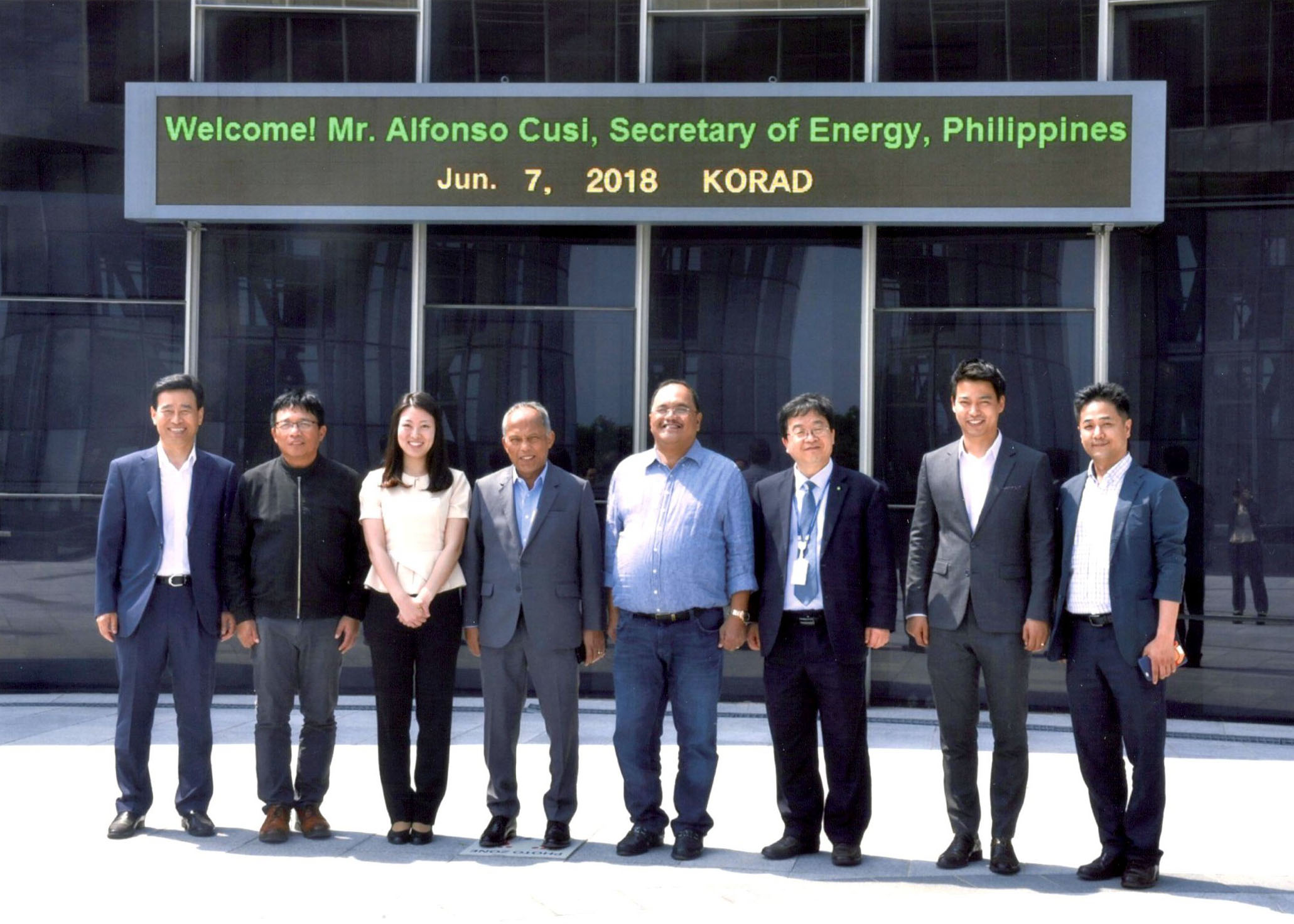
DOE STUDIES NUCLEAR: Sec. Alfonso G. Cusi (4th from left) along with Asec. Gerardo D. Erguiza Jr. (2nd from left) and Usec. Donato D. Marcos (5th from left) meet with executives of Korea Radioactive Waste Agency (KORAD) on June 7. During the visit, the DOE officials were briefed on the processes for radioactive waste management in the Republic of Korea.
The Department of Energy (DOE), headed by Secretary Alfonso G. Cusi, visited various nuclear facilities in the Republic of Korea (ROK), as the government evaluates the possible utilization of nuclear energy as a power source in the Philippines.
This was the thrust of the recent visit of Energy Secretary Alfonso G. Cusi to the ROK together with Undersecretary Donato D. Marcos and Assistant Secretary Gerardo D. Erguiza Jr.
ROK is among the world leaders in nuclear energy technology. About a third of its power supply is sourced from nuclear energy.
“We are establishing the cooperation with countries that could show us how nuclear technology is utilized in a safe and sustainable manner. We are hoping that the talks between the ROK and the Philippines will enable us to determine a suitable nuclear technology option for the country, should we consider to set up a Philippine nuclear program,” Secretary Cusi emphasized.
The DOE officials met with high-ranking executives of Korea Hydro & Nuclear Power (KHNP) led by its President and CEO Chung Jae Hoon on 5 June 2018 to discuss possible hydropower and nuclear projects in the country. They also conducted a site visit of the KHNP’s Kori plant in Busan.
The DOE and KHNP are also exploring the possibility of conducting a feasibility study on the establishment of a 100-MW modular reactor in the Cagayan Export Zone Authority (CEZA), a government-owned and -controlled corporation located at the northeastern tip of the Philippines. It is strategically located between the Pacific Ocean and China Sea.
CEZA also enjoys close proximity to ROK, People's Republic of China, Taiwan, and Japan.
“We want to empower the economic zones, because these industrial locators in the economic zones are among the biggest consumers of energy and among the biggest job generators. We hope that a feasibility study for CEZA may serve as a model for other economic zones, as well as cities and remote communities for them to consider the possibility of utilizing nuclear power as a cheaper and more sustainable solution,” Sec. Cusi said.
The DOE delegation also visited the Korea Radioactive Waste Agency, a quasi-governmental organization that manages radioactive waste for ROK. They also met with executives from Doosan Heavy Industries & Construction, which is one of the leading producers of nuclear reactors in the world.
Possible areas of cooperation for nuclear power development between the two countries may include academic trainings for engineers, on-the-job trainings for the siting of nuclear power plants and nuclear safety, assessment of radiological impact and public acceptance, nuclear power economics, and programs on nuclear fuel cycle and radioactive waste management.
The DOE is seeking the approval of its recommendations to tap nuclear power as a long-term energy option in the country, and is pushing for a national policy statement on the inclusion of nuclear power technology in the current energy mix to ensure energy supply security, stability, and reliability.
However, the country's nuclear program must first satisfy 19 infrastructure issues in accordance with the International Atomic Energy Agency’s "Milestones Approach" in establishing a sound development process for a nuclear power program.
Earlier, the DOE also tapped the Russian Federation State Atomic Energy Corporation for technical assistance on the study for the possible utilization of nuclear energy.
The Philippines' first and only nuclear power facility is the 650-MW Bataan Nuclear Power Plant, which has not been operated commercially and was mothballed in 1986.
###
